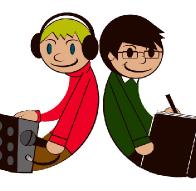Comments by a volunteer reviewer
Recently I was asked by a friend to read the draft of a review paper. The authors hoped to submit the paper soon, but my reply indicated that this would not be possible. I recommended that they find a paid academic editor after making major revisions themselves.
The following has been adapted to indicate some of the main points made, after:
(1) printing out a hard copy, (2) reading it in spare time, while commuting on a train, and then (3) making a start on detailed editing, with pen on paper.
After about two pages of such editing, and then spot checking through the remainder of the paper, I gave up. I could not afford to spend further time on it as a volunteer, and I am not looking for paid work. I doubt that the authors had even bothered to print a copy of their own paper to read it, before asking others to look at it.
Main points made in my reply to the authors:
1. Level of revision required.
Maximum... Many details in the text need editing (and almost every sentence!), but before anyone attempts this, attention needs to be given to larger structural problems.
2. Structure not clear.
There are too many headings without any obvious hierarchical structure. At the writing stage it is useful to identify major headings and subheadings with a alphanumeric and font system that can be later modified according to the publisher's guidelines. Some subsections located in different areas of the text could be usefully combined as they either expand on the same subtheme, or repeat each other.
3. Many sentences have unclear meaning...
4. Copy and paste construction?
Some parts of the text look as if they may have been copied and pasted from other texts. If the text of an existing report, legal document, or treaty is being quoted, this should clearly marked using the standard conventions for quoted text.
5. Catch phrases not explained....
6. Switching subjects from one sentence to the next...
7. Substantive problems.
In the first half of the paper, there is repetitive cataloging of [examples].... that obscures whatever argument is being made: examples are not being used clearly to illustrate the explanation or argument..... be more selective about the examples used, and make sure that each example serves an explanatory purpose that carries the paper forward.
If wanting to list examples, it is better to tabulate and place references alongside each example in the table.
8. Other issues (topics) that might be valuable to consider in the article.
There will be space for other issues, and a more rounded or balanced review, if there is less repetition in the examples given....
(Gave link to a recently published paper covering a relevant area of work ommitted from the review)
9. Title and content do not match well....
10. The title of the article is odd, and too long.
After reconsidering the scope, main focus, and structure of the article, a better title may become more obvious.
Please remember: a long title discourages mental recall and hence discussion or citation of an article.
It is in our own interest as authors to provide shorter catchy titles, and titles that are very clear in their meaning.

